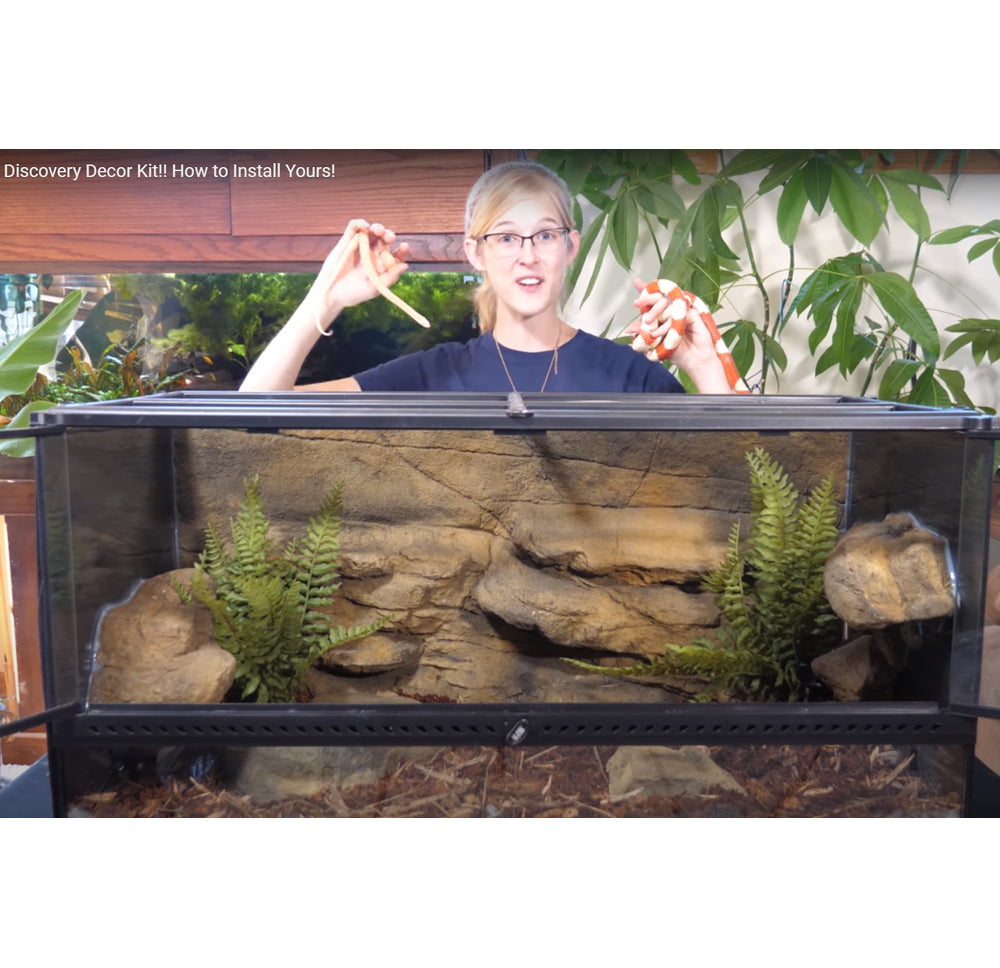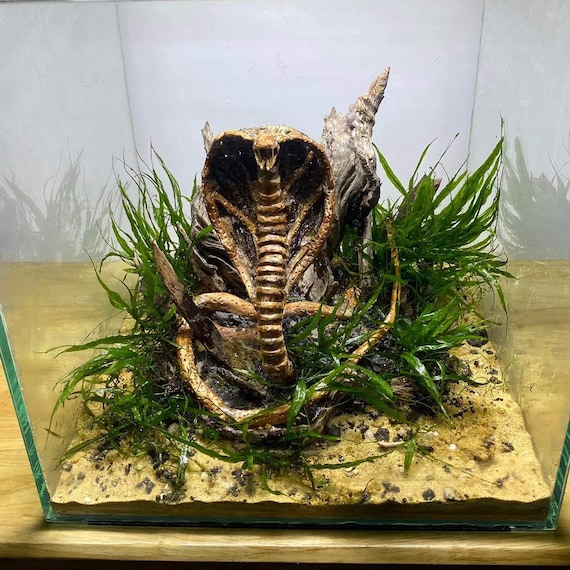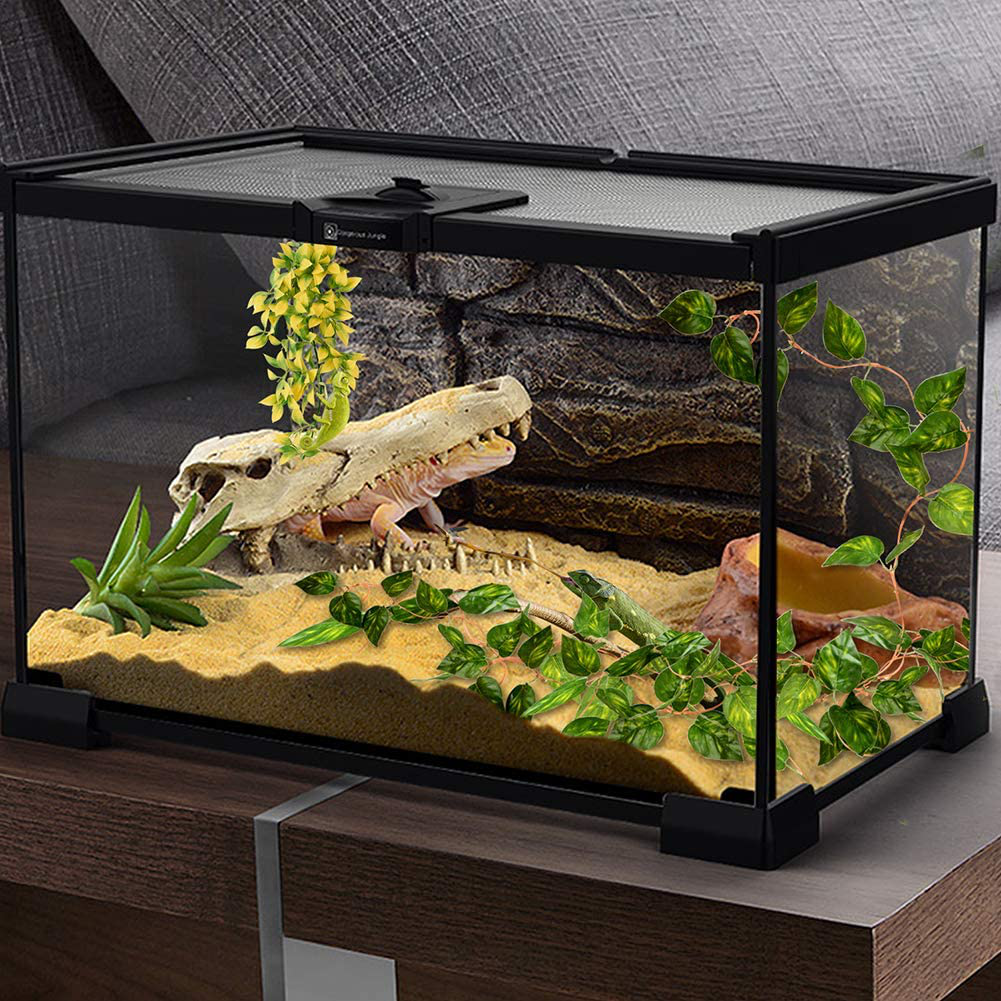As an avid reptile lover, I can tell you that setting up the perfect snake aquarium decor is essential for providing your snake with a healthy and comfortable environment. In this comprehensive guide, you’ll learn about the best practices, essential elements, and creative ideas to make your snake’s home a safe haven. Having successfully created multiple snake habitats, I’ll share my personal insights, tips, and even a few humorous stories along the way. Let’s dive in!
Understanding Your Snake’s Needs
Before we explore snake aquarium decor ideas, it’s crucial to understand what your snake needs for a thriving habitat. Different species have different requirements, but some general principles apply across the board.
Key Factors to Consider
- Size of the Aquarium: Consider your snake’s size and species. Generally, a larger tank is better, but ensure it’s not so big that the snake feels insecure.
- Temperature Regulation: Snakes are ectothermic, relying on external sources for body heat. Your setup should include both warm and cool areas.
- Humidity Levels: Depending on the species, humidity needs can vary significantly. Make sure to check the specific requirements of your snake.
- Hiding Spots: Snakes feel safe when they can hide. Your decor should provide ample hiding spots.
Essential Elements of Snake Aquarium Decor

Let’s take a closer look at the essential decors that can transform your snake’s aquarium into a comfortable habitat. Creating a balanced environment involves incorporating several elements thoughtfully.
1. Substrate
The substrate is the material used on the bottom of the aquarium. Choosing the right substrate is vital for your snake’s health and hygiene.

Substrate Options
- Aspen Bedding: Natural and safe, aspen is an excellent choice for many species.
- Coconut Fiber: Great for retaining humidity, perfect for tropical snakes.
- Reptile Carpet: Easy to clean, but takes away the natural feel.
- Sand: Not recommended for many snakes as it can cause impaction if ingested.
Comparison Table of Substrates
| Substrate Type | Pros | Cons |
|---|---|---|
| Aspen Bedding | Natural, absorbs moisture, safe | Needs frequent cleaning |
| Coconut Fiber | Holds humidity well | Can be challenging to clean |
| Reptile Carpet | Reusable, easy to clean | Less natural look |
| Sand | Aesthetic appeal | Risk of impaction |

2. Hides and Shelters
Creating a sense of security is crucial for your snake. The right hides help mimic their natural environment and keep them stress-free.
Types of Hides
- Caves: These can be natural or artificial; choose one suited to your snake’s size.
- Logs and Branches: Adds a naturalistic touch while providing hiding spots.
- Plants: Live or artificial plants can create more hiding places and enhance the aesthetic.

Why Hides are Important
Without adequate hiding spots, snakes can become stressed and unhealthy. It’s essential to provide at least two hideouts—one on the warm side and one on the cool side of the tank.
3. Decor Elements
Incorporating visually appealing and functional decor not only beautifies the aquarium but also promotes your snake’s well-being.

Decor Ideas
- Rocks: Natural rocks can create climbing opportunities and basking spots.
- Water Bowls: A sturdy, shallow bowl allows hydration and soaking.
- Artificial Plants: Adds greenery without the maintenance of live plants.
Pros and Cons of Various Decor Elements
| Decor Element | Pros | Cons |
|---|---|---|
| Rocks | Natural look, promotes climbing | Can be heavy, potential for injury |
| Water Bowls | Essential for hydration | Needs daily cleaning |
| Artificial Plants | No maintenance, non-toxic | Less realistic than live plants |

Creating a Natural Habitat
To replicate your snake’s natural environment, consider their natural habitat when setting up the aquarium. This not only benefits their mental health but also their physical well-being.
Biotope Setup
A biotope aquarium mimics the specific natural conditions of a snake’s geographical location. Here’s how to create one:
Steps to Create a Biotope Aquarium
- Research your snake’s natural habitat.
- Choose appropriate substrates, decorations, and plants.
- Maintain the right temperature and humidity levels.
- Include a water feature if applicable to the species.
Incorporating Live Plants
Live plants can create a more dynamic environment for your snake. They can help with humidity and provide hiding spots.
Best Plants for Snake Aquariums
- Pothos: Hardy and easy to care for.
- Spider Plant: Non-toxic and great for beginners.
- Bamboo: Adds a unique look and is snake-safe.
Maintaining Your Snake Aquarium Decor
Once you’ve set up the perfect habitat, maintaining it is key to your snake’s health. Regular maintenance ensures that the environment remains safe and sanitary.
Cleaning Routine
- Daily: Check and refill the water bowl, remove any waste.
- Weekly: Spot clean the substrate and decor.
- Monthly: Deep clean the entire tank and replace substrate if necessary.
Monitoring Temperature and Humidity
Invest in a reliable thermometer and hygrometer to monitor the environmental conditions. Ensure that both the cold and warm sides of the aquarium are within the recommended ranges.
Common Problems and Solutions
Even with the best setups, problems can arise. Here are some common issues and how to tackle them.
Problem: Stress in Snakes
- Solution: Increase hiding spots and observe traffic around the tank.
Problem: Low Humidity Levels
- Solution: Add a water feature or mist the enclosure regularly.
Problem: Poor Temperature Regulation
- Solution: Adjust heating pads or lamps to maintain proper gradients.
Snake Aquarium Decor FAQs
What size aquarium do I need for my snake?
The size of the aquarium depends on the species of snake you own. Generally, a minimum of 20 gallons is recommended for smaller species, while larger species may require 50 gallons or more.
Can I use real plants in my snake aquarium?
Yes, many species of live plants are safe for snakes. Just ensure that the plants are non-toxic and suitable for the humidity and lighting conditions of the enclosure.
How often should I clean my snake’s enclosure?
Daily maintenance involves checking the water and removing waste. A deeper clean of the entire enclosure should be done monthly.
Is it okay to use sand as a substrate?
Sand can be risky for many snake species as it can lead to impaction if ingested. It’s best to choose a safer substrate option.
Do snakes need lighting in their enclosure?
While snakes don’t need a light for visibility, they do benefit from a heat source. Using a heat lamp can simulate natural sunlight, helping to regulate their body temperature.
Conclusion
Creating the perfect snake aquarium decor takes time and consideration, but the benefits for your reptilian friend are immense. By understanding your snake’s natural needs and preferences, you can craft a space that not only looks appealing but also promotes health and happiness. Remember, the most essential ingredients to a successful aquarium are patience, observation, and a willingness to adapt. Happy decorating!